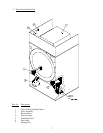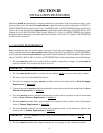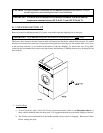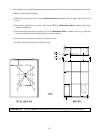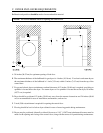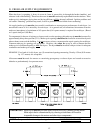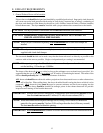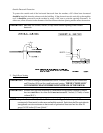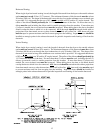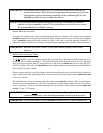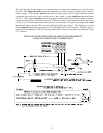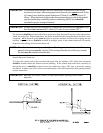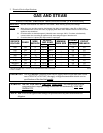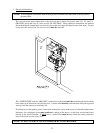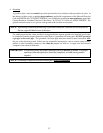
15
Horizontal Venting:
When single dryer horizontal venting is used, the length of ductwork from the dryer to the outside exhaust
outlet must not exceed 45 feet (13.71 meters). The minimum diameter of this ductwork must be at least
20-inches (50.8 cm). The shape of the ductwork
is not critical as long as the minimum cross-sectional area
is provided. It is suggested that the use of 90° turns be avoided; use 30° and/or 45° angles instead. The
radius of the elbows should preferably be 1-1/2 times the diameter of the duct. No more than one (1)
elbow must be used including the elbow used for outside protection from the weather. If more than one
(1) elbow is needed, the cross-sectional area must be increased. When adding ducts, the duct to be added
should overlap the duct to which it is to be connected. ALL ductwork should be smooth inside with no
projections from sheet metal screws or other obstructions, which will collect lint. ALL ductwork joints
must be taped to prevent moisture and lint from escaping into the building. Inspection doors should be
installed at strategic points in the exhaust ductwork for periodic inspection and cleaning of lint from the
ductwork.
Vertical Venting:
When single dryer vertical venting is used, the length of ductwork from the dryer to the outside exhaust
outlet must not exceed 30 feet (9.14 meters). The minimum diameter of this ductwork must be at least
24-inches (60.96 cm) even though the dryer exhaust duct is only 20-inches (50.8 cm). The shape of the
ductwork
is not critical as long as the minimum cross-sectional area is provided. It is suggested that the use
of 90º turns be avoided; use 30º and/or 45º angles instead. The radius of the elbows should preferably be
1-1/2 times the diameter of the duct. No more than three (3) elbows must be used, including the two (2)
elbows (gooseneck) used for outside protection from the weather. If more than three (3) elbows are
needed, the cross-sectional area must be increased. When adding ducts, the duct to be added should
overlap the duct to which it is to be connected. ALL ductwork should be smooth inside with no projections
from sheet metal screws or other obstructions, which will collect lint. ALL ductwork joints must be taped
to prevent moisture and lint from escaping into the building. Inspection doors should be installed at
strategic points in the exhaust ductwork for periodic inspection and cleaning of lint from the ductwork.



